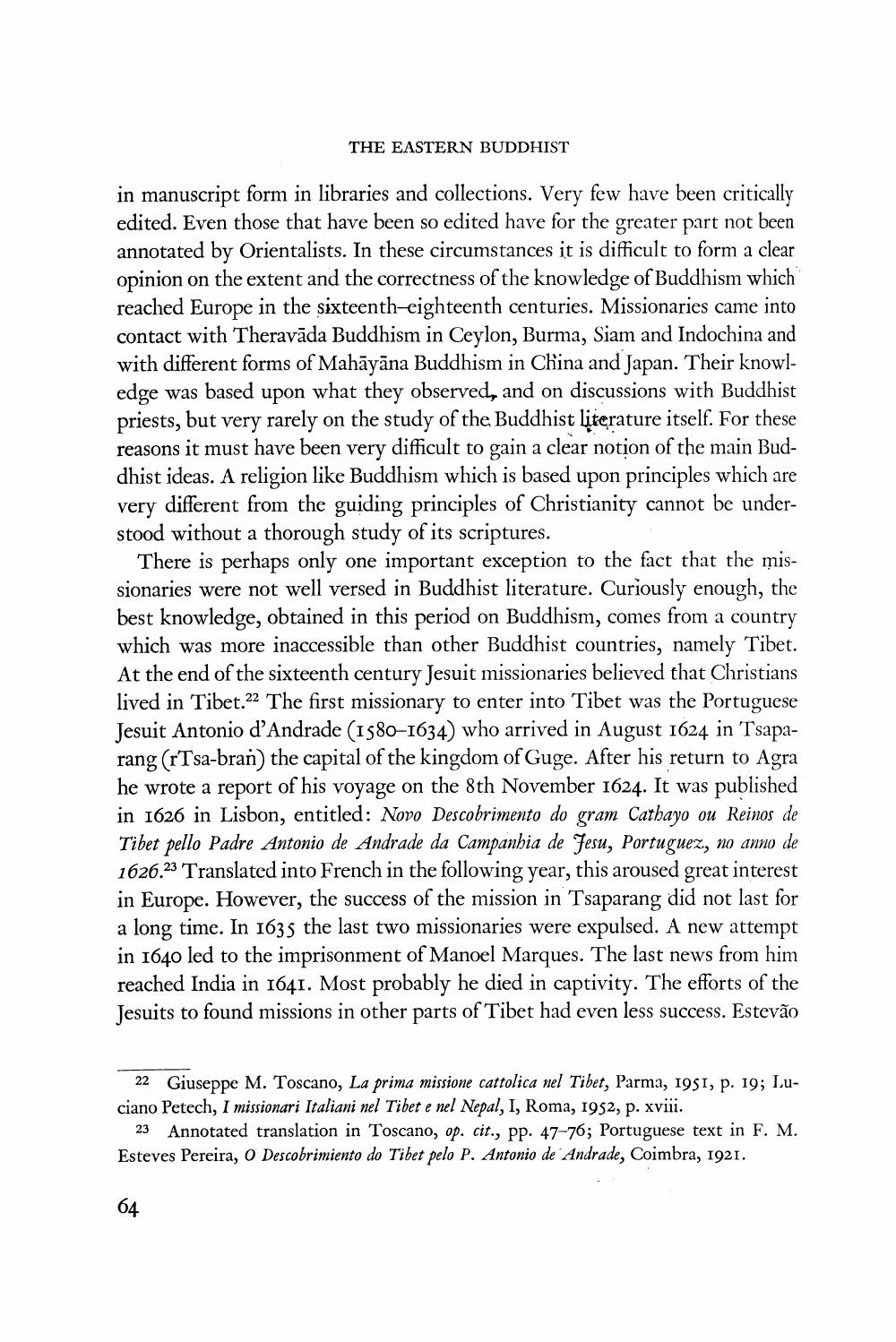________________
THE EASTERN BUDDHIST
in manuscript form in libraries and collections. Very few have been critically edited. Even those that have been so edited have for the greater part not been annotated by Orientalists. In these circumstances it is difficult to form a clear opinion on the extent and the correctness of the knowledge of Buddhism which reached Europe in the sixteenth-eighteenth centuries. Missionaries came into contact with Theravāda Buddhism in Ceylon, Burma, Siam and Indochina and with different forms of Mahāyāna Buddhism in China and Japan. Their knowledge was based upon what they observed, and on discussions with Buddhist priests, but very rarely on the study of the Buddhist lįterature itself. For these reasons it must have been very difficult to gain a clear notion of the main Buddhist ideas. A religion like Buddhism which is based upon principles which are very different from the guiding principles of Christianity cannot be understood without a thorough study of its scriptures.
There is perhaps only one important exception to the fact that the missionaries were not well versed in Buddhist literature. Curiously enough, the best knowledge, obtained in this period on Buddhism, comes from a country which was more inaccessible than other Buddhist countries, namely Tibet. At the end of the sixteenth century Jesuit missionaries believed that Christians lived in Tibet.22 The first missionary to enter into Tibet was the Portuguese Jesuit Antonio d'Andrade (1580-1634) who arrived in August 1624 in Tsaparang (rTsa-bran the capital of the kingdom of Guge. After his return to Agra he wrote a report of his voyage on the 8th November 1624. It was published in 1626 in Lisbon, entitled: Novo Descobrimento do gram Cathayo ou Reinos de Tibet pello Padre Antonio de Andrade da Campanhia de Jesu, Portuguez, no anno de 1626.23 Translated into French in the following year, this aroused great interest in Europe. However, the success of the mission in Tsaparang did not last for a long time. In 1635 the last two missionaries were expulsed. A new attempt in 1640 led to the imprisonment of Manoel Marques. The last news from him reached India in 1641. Most probably he died in captivity. The efforts of the Jesuits to found missions in other parts of Tibet had even less success. Estevão
22 Giuseppe M. Toscano, La prima missione cattolica nel Tibet, Parma, 1951, p. 19; Luciano Petech, I missionari Italiani nel Tibet e nel Nepal, I, Roma, 1952, p. xviii.
23 Annotated translation in Toscano, op. cit., pp. 47-76; Portuguese text in F. M. Esteves Pereira, O Descobrimiento do Tibet pelo P. Antonio de Andrade, Coimbra, 1921.
64




